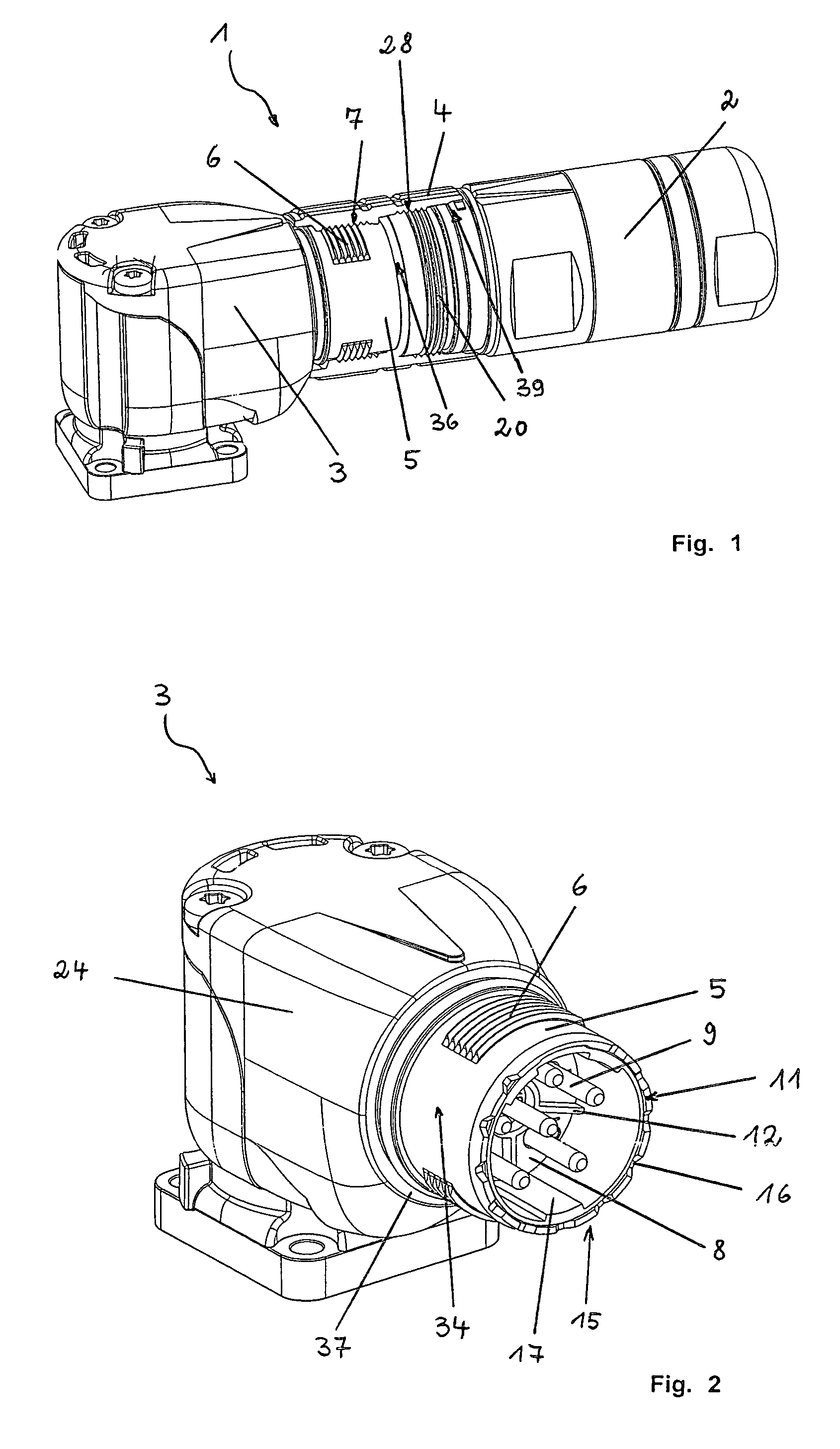Electrical plug-in connection
a plug-in connection and plug-in technology, applied in the direction of coupling device connection, coupling parts engagement/disengagement, electrical apparatus, etc., can solve the problems of union nut being detached, time required for screwing and unscrewing the union nut when producing or disconnecting the plug-in connection, etc., to achieve the effect of improving the plug-in connection
- Summary
- Abstract
- Description
- Claims
- Application Information
AI Technical Summary
Benefits of technology
Problems solved by technology
Method used
Image
Examples
Embodiment Construction
[0024]The plug-in connection 1 according to the invention and illustrated in FIG. 1 essentially comprises a plug part 2, a mating plug part 3 and a union nut 4. The plug part 2 is plugged together with the mating plug part 3 and is screwed to the mating plug part 3 by means of the union nut 4 borne by the plug part 2. The plug part 2 produces a large number of electrical connections to the mating plug part 3, which is fixed to a machine housing (not illustrated). The plug part 2 and the mating plug part 3 are shown individually, in the state in which they are not plugged together, in FIGS. 4 and 2.
[0025]The mating plug part 3 has a thread sleeve 5 having an external thread 6. The external thread 6 has a plurality of thread turns and is of a segmented design. It has three thread-free regions 34 in the plug-in direction, which are arranged such that they are distributed asymmetrically over the circumference of the thread sleeve 5. An internal thread 7, which is equivalently matched to...
PUM
 Login to View More
Login to View More Abstract
Description
Claims
Application Information
 Login to View More
Login to View More - R&D
- Intellectual Property
- Life Sciences
- Materials
- Tech Scout
- Unparalleled Data Quality
- Higher Quality Content
- 60% Fewer Hallucinations
Browse by: Latest US Patents, China's latest patents, Technical Efficacy Thesaurus, Application Domain, Technology Topic, Popular Technical Reports.
© 2025 PatSnap. All rights reserved.Legal|Privacy policy|Modern Slavery Act Transparency Statement|Sitemap|About US| Contact US: help@patsnap.com



